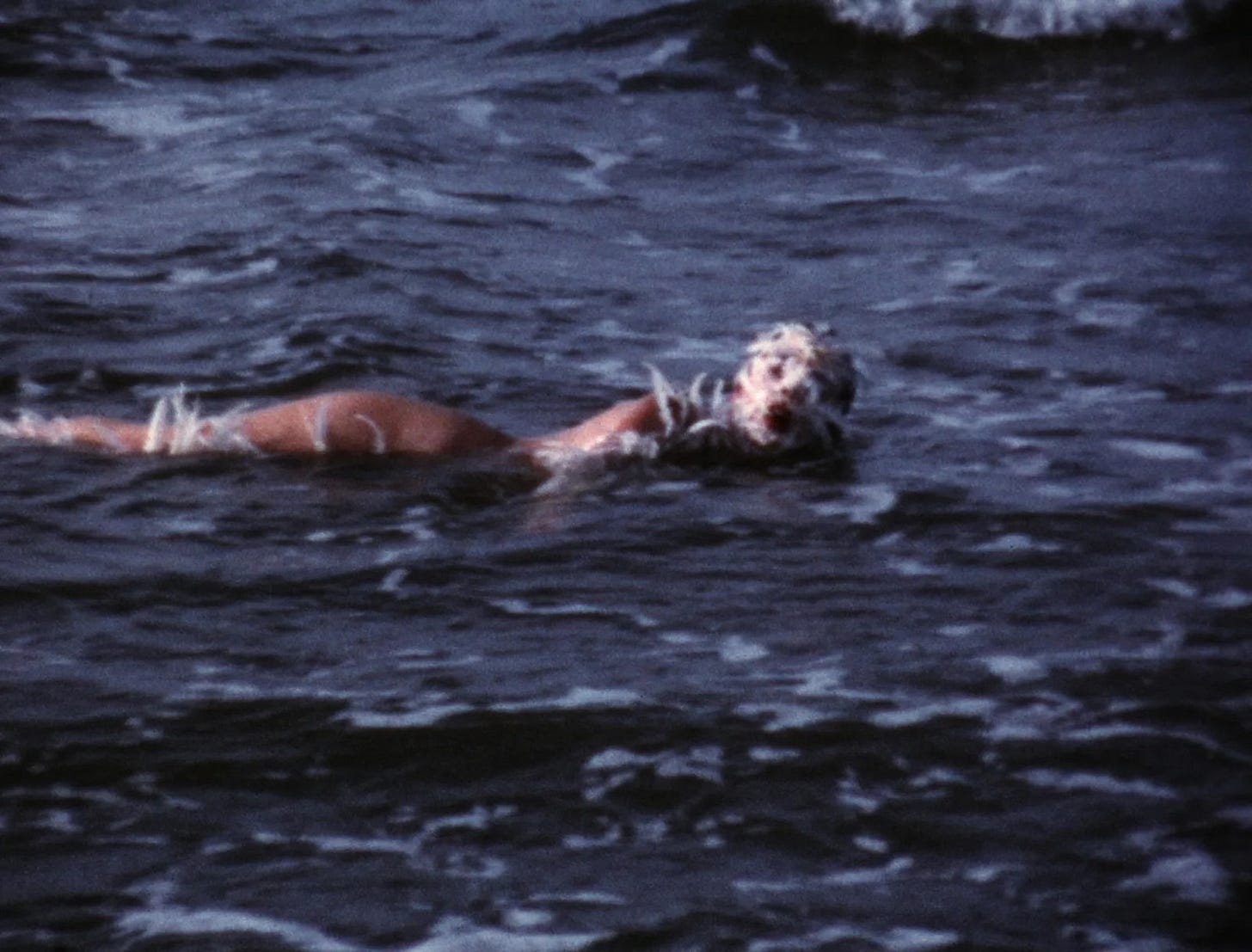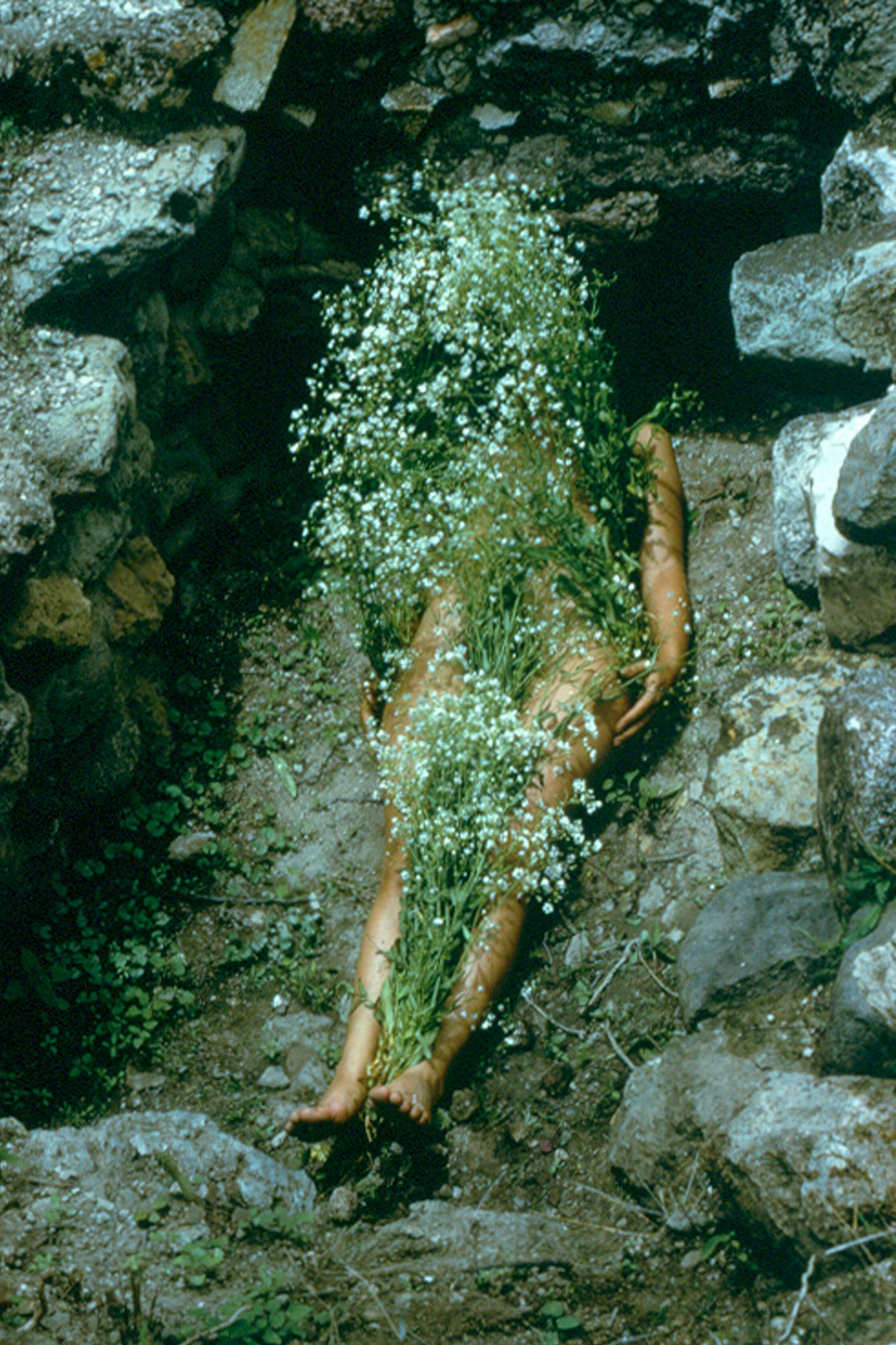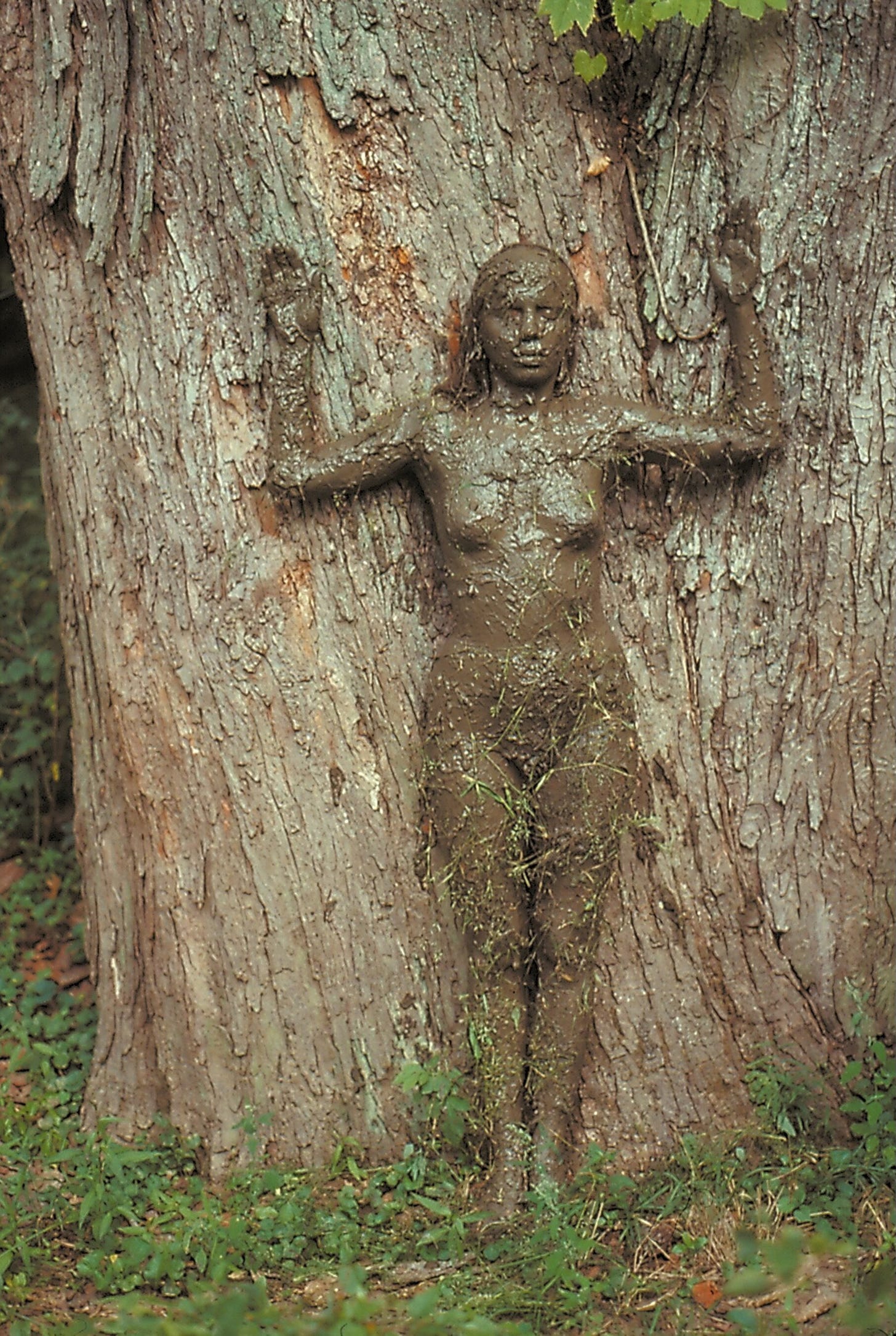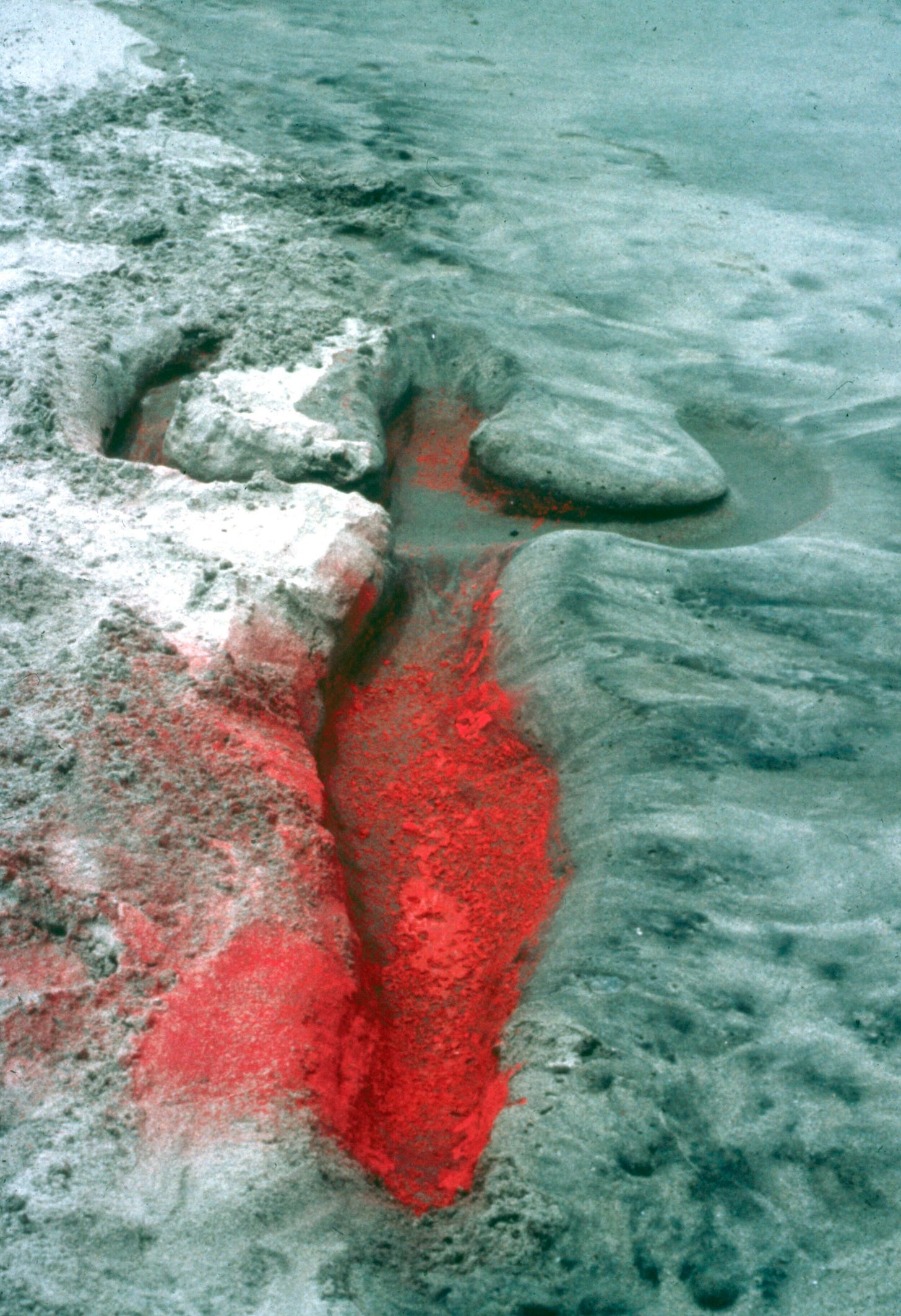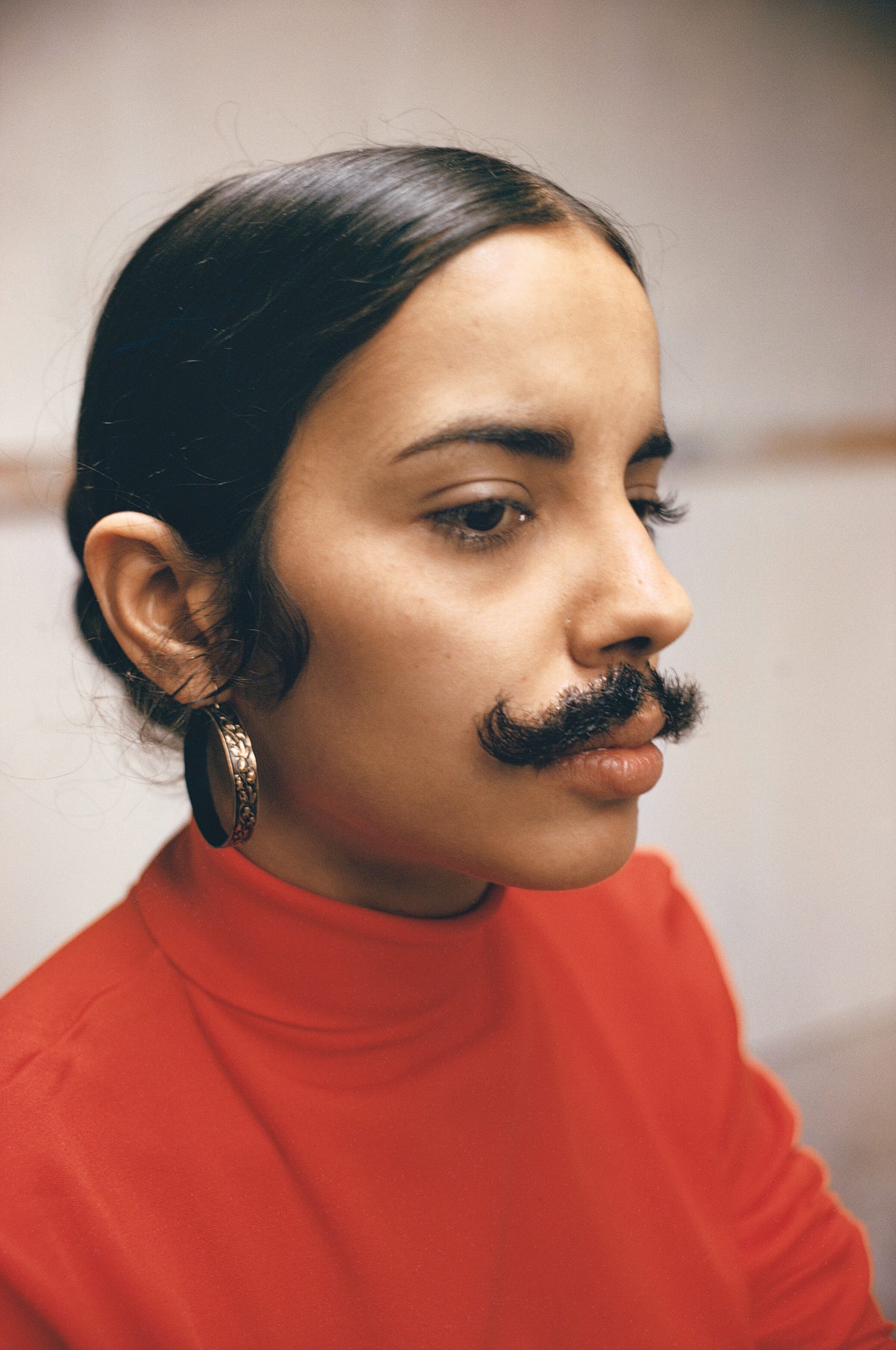I’m still trying to figure out why I keep coming back to Ana Mendieta in my writing. She’s there in Constellations, the epitome of the embodiment. Nell, the performance and land artist character in Hagstone, is hugely influenced by Mendieta’s practice; of seeing the value in ephemerality and the kinds of possibility etched into liminal landscapes. I can feel her haunting the pages of the new book too.
Mendieta was born in Havana, Cuba in 1948, where she lived until the Revolution in 1961, when many families sent their children unaccompanied to the US, under a programme called Operation Peter Pan. Ana was only 12 when she reached Florida and this sense of displacement, of disruption, loomed over the rest of her life. Much of her future work captures this feeling of being uprooted from her homeland.
The essay focuses on several pieces, including her (literally, physically) ground-breaking Silueta1 series. Imágen de Yágul is a microcosm of several of her artistic preoccupations and reveals how Ana saw the world. The tomb itself is from the Zapotec civilisation, an indigenous people of MesoAmerica and Mendieta’s childhood impacted on her interest in ancestry and ideas of home. She felt that strong sense of breach, of being physically separated from Cuba.
“I have no motherland, I feel a need to join with the earth”
Mendieta explained: “Having been torn from my homeland during my adolescence, I am overwhelmed by the feeling of having been cast from the womb. My art is the way I re-establish the bonds that unite me to the Universe. It is a return to the maternal source.” Later Silueta pieces channel other matriarchal figures in nature, from Mother Earth and the Green Woman, to goddesses from Afro-Cuban cultures. They epitomise the divine feminine, which is central to Mendieta’s work.
The Silueta artworks are striking for many reasons - the sheer physicality, the psychogeographic echo, the foreshadowing of climate issues directly linked to the Anthropocene - but also due to the absence of the body, a haunting imprint left behind as if at a crime scene. Some art critics view this bodily absence as political; a logistical commentary on Mendieta’s separation from Cuba. Collectively, her work navigates the trauma of separation, the experience of a displaced diaspora, the pain of being an immigrant. There is righteousness and anger and political intent in everything she made: but also humour, joy and playfulness. Her thematic concerns - ahead of their time, but more prescient than ever – delve into co-feminism, the legacy of colonialisation, environmentalism and climate change, the inequalities of capitalism and the ongoing epidemic of violence against women.
The essay also examines the themes and motivations in Mendieta’s blood performances: the ritualistic overtones of Blood + Feathers, 1974 and (Untitled) Chicken Piece, 1972; in Sweating Blood, 1973, filmed on Super 8mm video, Mendieta stands in a darkened room, as blood begins to trickle down from her scalp. It’s visceral and confrontational; its quiet power is in showing the aftermath of violence, not the act itself. The viewer’s imagination fills in the gaps – the horror - for themself. Mendieta herself died as a result of violence, aged 36, and 2025 marks the 40th anniversary of her death.
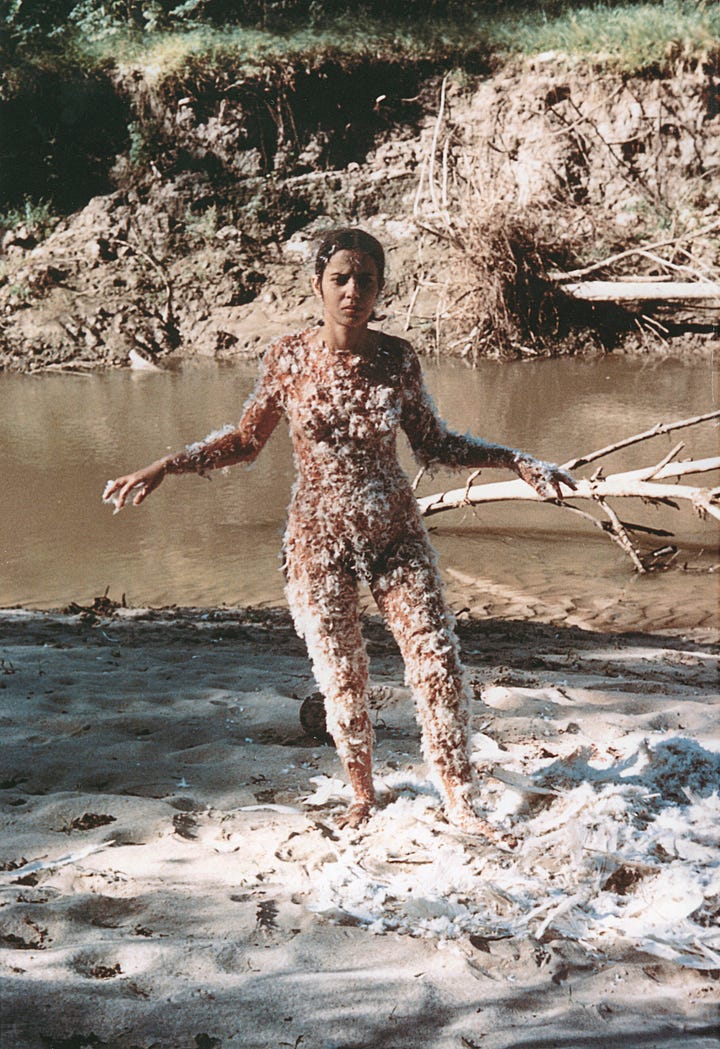
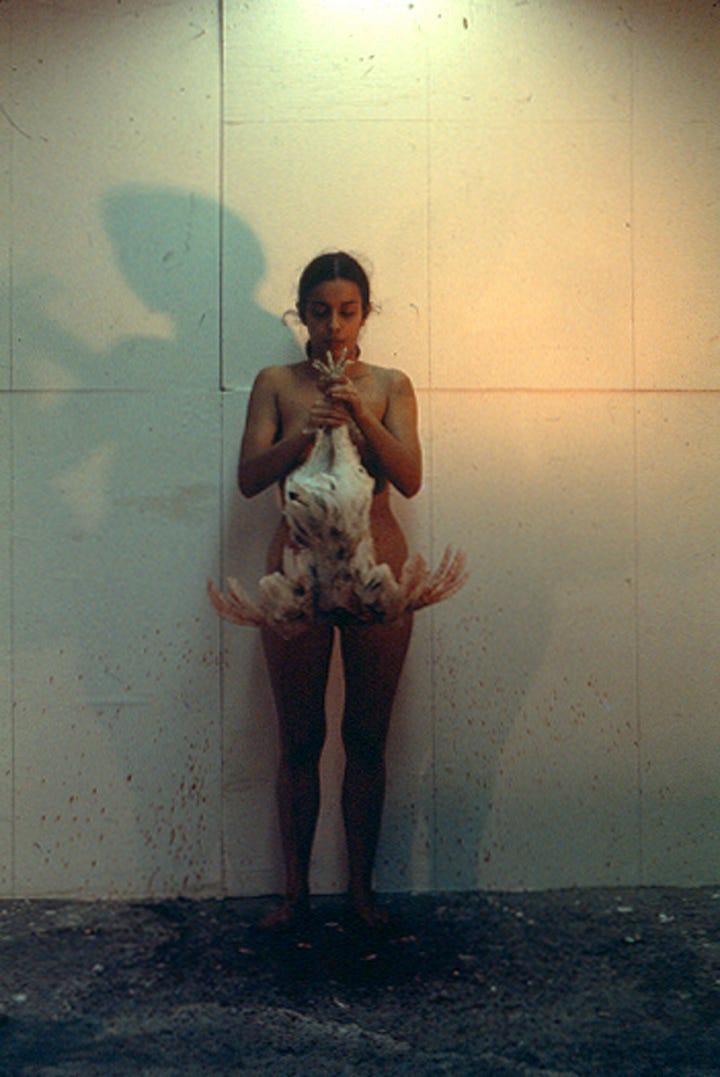
You can hear more about her life and work in this essay, which will be broadcast on Sunday July 27th on RTÉ Radio 1 at 19.30PM or online here. It’s part of a new series of A Giant at my Shoulder, which first aired 25 years ago on RTÉ, where writers and artists champion a creative antecedent who’s had a major impact on their practice. The original series has just been re-broadcast and includes Edna O’Brien on James Joyce, artist Alice Maher on Louise Bourgeois (Maher explains how she got to visit LB at home in New York), Colm Tóibín – before he wrote The Master - on Henry James and Jennifer Johnson on Shakespeare.
The 2025 series will feature Mike McCormack on Thomas Pynchon, Siobhán McSweeney on Angela Lansbury, Kerri Ní Dochartaigh on Virginia Woolf, John Connell on Henry David Thoreau, and kicks off this Sunday with Eimear McBride on Edna O’Brien. You read more about the series in this piece by the series producer Clíodhna Ní Anluain.
Thanks for reading.
‘Silueta’ is the Spanish word for silhouette



